Every so often I love to have a guest blogger write a post for me, so I can have the night off to do something fun and exciting like attend a PTO meeting (sad, right?). My colleague, Steve Ostapower, was recently involved in a situation where the power usage of a Von Duprin EL (electric latch retraction) device was questioned, and I asked him to share his findings with you (Thanks Steve!). Enjoy!
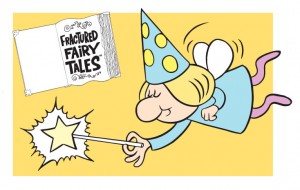 Fractured Fairy Tales…Do you remember those cartoons? They used to be part of the Rocky and Bullwinkle Show and they were great…but they often left me (i.e. little me) a bit confused. Just a few weeks ago, I was reminded of them when I received a copy of an email from an integrator claiming that the electrical load from the “high inrush” feature of an electric latch retraction (EL) exit device was, and I’m quoting him, “a LEED1 killer.” Yikes!
Fractured Fairy Tales…Do you remember those cartoons? They used to be part of the Rocky and Bullwinkle Show and they were great…but they often left me (i.e. little me) a bit confused. Just a few weeks ago, I was reminded of them when I received a copy of an email from an integrator claiming that the electrical load from the “high inrush” feature of an electric latch retraction (EL) exit device was, and I’m quoting him, “a LEED1 killer.” Yikes!
With concern about energy savings driving many product selections, and a term like “high inrush,” this claim seemed like it might have some merit, so I thought I’d better look into it.
The high inrush of Von Duprin’s EL exit device momentarily increases the force of latch retraction to improve its reliability under any number of conditions that might provide resistance (e.g. frost, wind pressure, etc.). The key word here is “momentarily,” which in this case is 3-milliseconds (3/1000ths of a second). The math can get a bit tiresome and most of us scratch our heads when given wattage totals, so I decided to convert the load to cost—just like our electrical utilities do. (I think we can all relate to our electric bills.) In Massachusetts, one of the most expensive commercial electricity markets in the country—15.5¢ per kilowatt hour—the 3-millisecond inrush at 16 amps (@24 volts) equals about 0.00000496¢ per use. Hmmm. The EL on the front door of our office has about an 8-second hold (@0.3 amps) which would add another 0.000248¢ for a total cost of around 0.000253¢ per use. Were we to keep the latch retracted for a 9-hour work day, the cost would be about 1.0044¢ per day. Sure, other components like the credential reader and power supply add load/cost, but the scale is about the same or smaller.
In contrast to the EL’s loads, a typical desktop computer with a monitor operated for 9-hours in the same market, uses about 27.9¢ of electricity each day…so it would take about 27 ELs held back for 9 hours or one going through about 4000, 8-second opening cycles to equal the energy used by that one computer workstation. Every little bit helps when it comes to energy savings but, in light of these numbers, I think it’s pretty clear that when modeling buildings for optimized energy performance (i.e. LEED® Energy and Atmosphere Credit 1), the electrified hardware loads are minimal (even miniscule) compared to loads posed by HVAC, appliances/equipment, lighting and IT infrastructure—the typical focus of this credit. When asked specifically about this issue, the U.S. Green Building Council responded, “We are unaware of anything within the LEED rating system which specifically prevents project teams from earning certification due to electronic door hardware.”
The moral of this fairy tale: There’s no need to panic when using an electrified panic. 😮
1LEED® is “Leadership in Energy and Environmental Design,” a series of rating systems/metrics developed by the U.S. Green Building Council (USGBC), intended to gauge a building project’s design merit in regards to sustainability.
You need to login or register to bookmark/favorite this content.


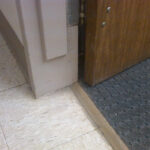
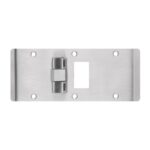

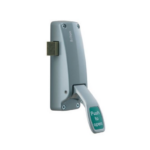
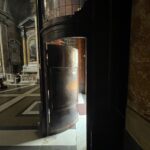
Thank you so much for this post. I have actually thought about (but never researched much) the affect electronic hardware has on LEED and just energy use in general. It really is a very small amount of energy use after all.
You’re welcome, Joe. After so many years of specifying electrified door hardware, I hadn’t “done the math” until I saw the claim in that email.
-Steve